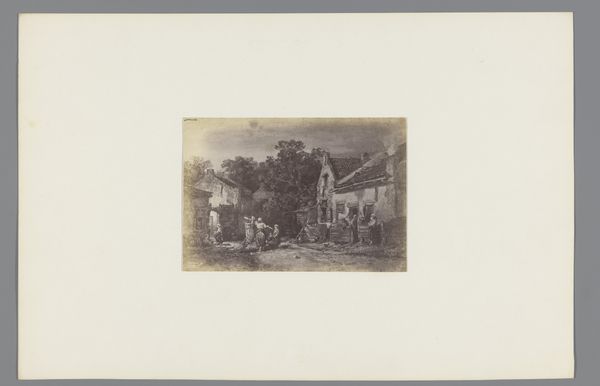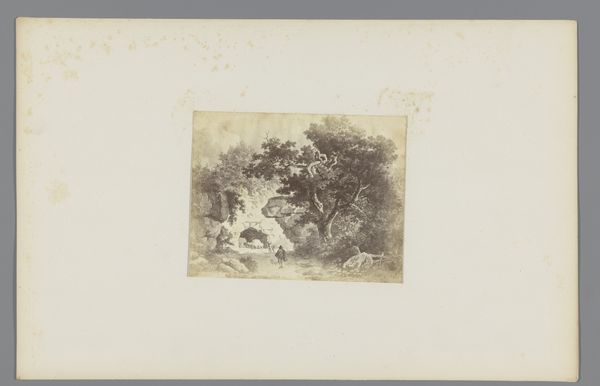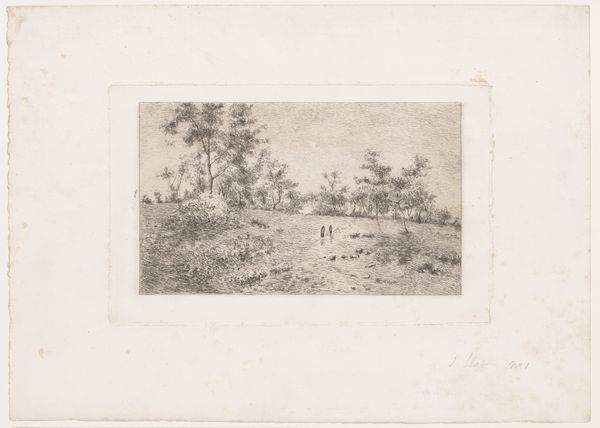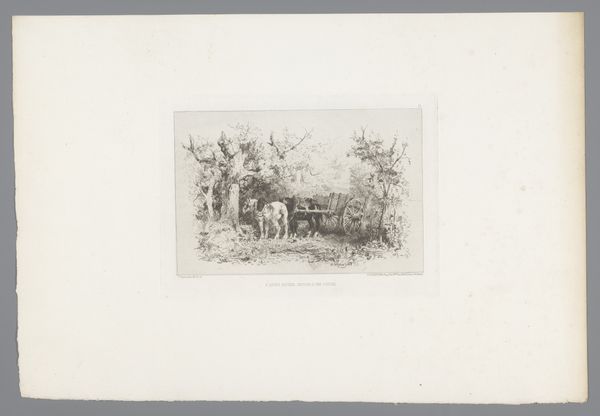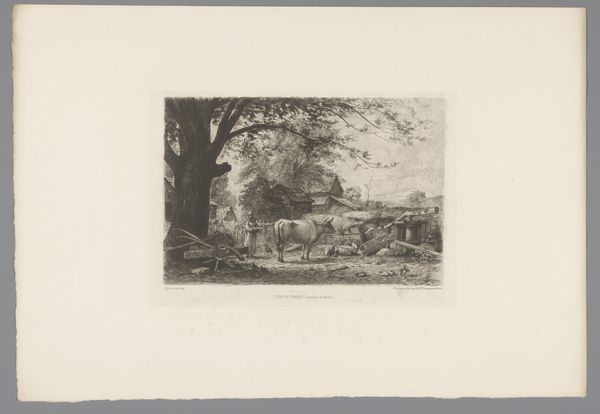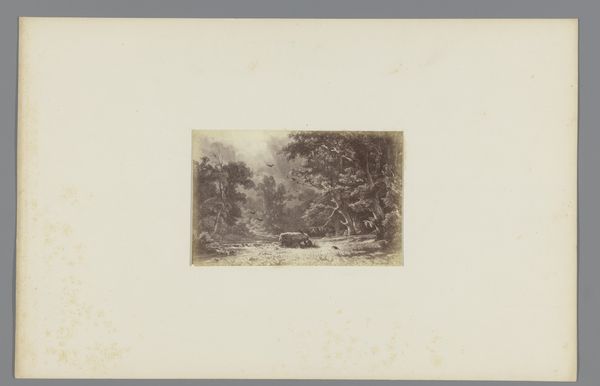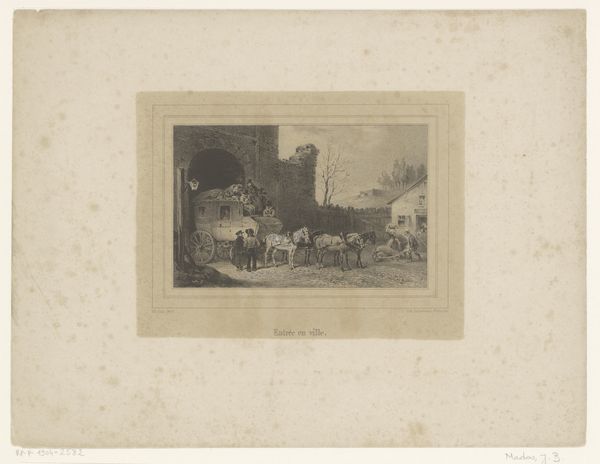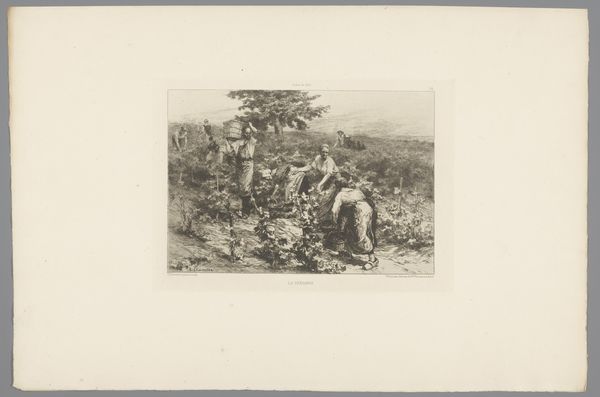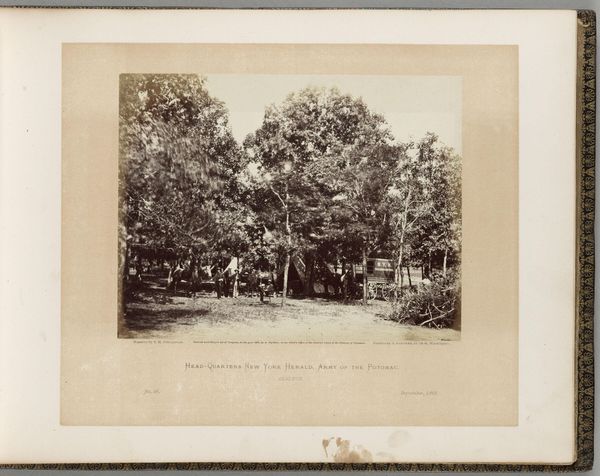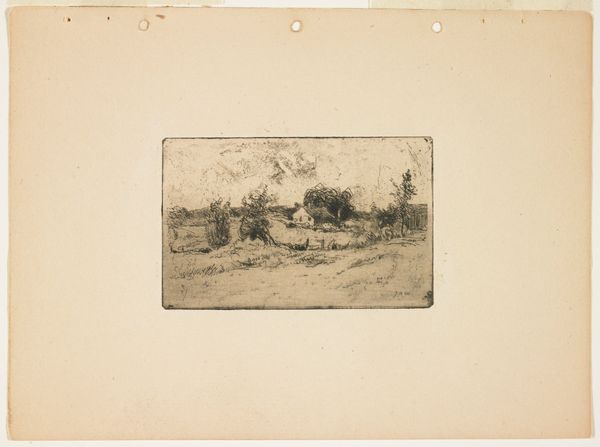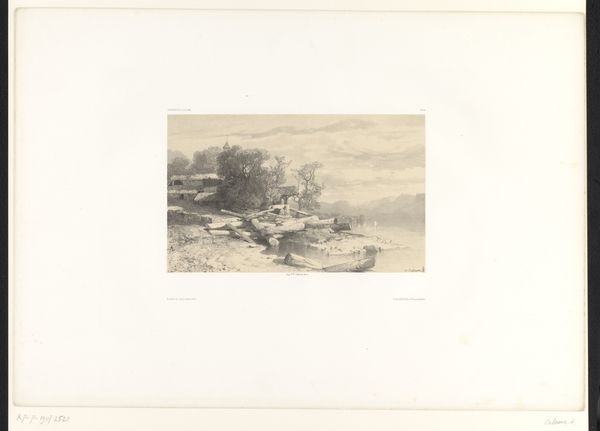
Fotoreproductie van het schilderij 'Tafelschuimers' door Mari ten Kate before 1871
0:00
0:00
print, photography
# print
#
landscape
#
photography
#
genre-painting
#
realism
Dimensions: height 125 mm, width 181 mm
Copyright: Rijks Museum: Open Domain
Editor: Here we have a photographic reproduction of Mari ten Kate’s painting, "Tafelschuimers," made sometime before 1871. What strikes me is the domesticity captured; a family meal outdoors. Given your expertise, how would you interpret the material and its making within the context of the time? Curator: Considering it's a photographic print of a painting, we can discuss it in terms of production and its role within a social hierarchy. Was photography a means of democratizing art at the time? Making it more accessible beyond the wealthy elite who commissioned the paintings themselves? Consider the labor involved, not just the painter but the photographer, and those who produced the paper, glass plates, and chemicals used in this print. How does the photograph change the original's value, its perceived uniqueness? Editor: That's interesting. I hadn't thought about it that way. The presence of the family’s dogs also is something to consider, isn’t it? Curator: Indeed. Domestic animals and rural landscapes as part of an art commodity become another consideration, and it helps in reading the cultural context of its original patrons. How does it present rurality? Is it idealizing the agrarian life for a burgeoning industrialized society? Where would this painting or its photographic copy hang, and who would consume the image? Editor: So, it is not just about the scene, but also about the whole industrial context surrounding its manufacturing and distribution. That helps understand what Mari ten Kate represents for that society, before 1871. Curator: Precisely! By investigating the production, reproduction, and consumption of this image, we gain insights into 19th-century society, labor practices, and artistic hierarchies. It makes us think about art not only as aesthetic form, but also as industrial asset. Editor: Thank you, this definitely changes the way I’ll look at art from now on. It is truly illuminating!
Comments
No comments
Be the first to comment and join the conversation on the ultimate creative platform.
